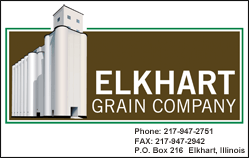|
 One program has had very little fundamental change since its
creation in 1985. The Conservation Reserve Program, known as
CRP, has continued to reserve its spot in five farm bills over
25 years. One program has had very little fundamental change since its
creation in 1985. The Conservation Reserve Program, known as
CRP, has continued to reserve its spot in five farm bills over
25 years.
What exactly is the Conservation Reserve Program?
CRP is a voluntary program designed to help farmers, ranchers
and other agricultural producers protect their environmentally sensitive land
and improve farm productivity. Participants plant long-term,
resource-conserving covers such as cool season (introduced)
grasses, warm season (native) grasses, or even trees and shrubs.
Each CRP practice has specific environmental benefits that are
achieved on the farm.
In return, eligible landowners receive annual rental payments
and up to 50 percent cost-share assistance from the Commodity Credit Corp. to
establish long-term, resource-conserving covers on eligible farmland.

To be considered eligible land for CRP consideration, the land
being offered for enrollment must be physically and legally capable of being
cropped in a normal manner and must have been planted to an agricultural
commodity during any four of the previous six crop years from 2002 to 2007 and
the current year. Why would anyone want to take farm ground
out of production to implement such practices?
Well, that is a good question, particularly given the commodity
prices we have experienced in the past few years. CRP annual payments have
fluctuated with commodity prices over the years.
In 1986, the average price received for corn was around $1.50
per bushel, and the average rental payment per acre for CRP in Logan County was
$89.04. Twenty-five years later, the average price received for corn in 2011 was
around $6.20 per bushel, and the average CRP rental payment per acre in Logan
County was $173.85.
CRP's goal is not to financially compete with highly productive
farm ground, but rather to serve as an opportunity for the least productive
land.
In many cases the most cost-effective option to reduce erosion
is to put the land into a wildlife-friendly cover, which will not only reduce
the erosion, but also improve habitat and reduce sediment and nutrient runoff.

A CRP grass waterway practice improves water drainage on the
farm, which will improve the farm's overall productivity.
A wildlife practice may be implemented on a certain field that
has a lighter and less productive soil or has a long history of soil saturation
or flooding due to its bottomland location adjacent to a creek, river or stream.
The wildlife habitat can provide a wide range of recreational opportunities and
also lessen the stress of battling Mother Nature year after year when trying to
produce a salvageable crop.
Each farm is unique and must be analyzed for which practice will
benefit the farm the most. The Farm Service Agency works with the Natural
Resource Conservation Service to achieve this goal.
Likewise, the Logan County NRCS office assists the FSA with
implementing the CRP. NRCS district conservationist Bill Dickerson and soil
conservationist Justin Atkins provide technical knowledge and engineering
background to help ensure CRP practices are correctly installed and achieve
desired environmental goals. Steve Bracey, resource conservationist for the
Logan County Soil and Water Conservation District, also helps design and
maintain conservation practices. These individuals have 71 years of combined
experience installing conservation practices for the Logan County area.
OK, so CRP programs offer wildlife habitat, soil retention and
nutrient runoff protection ...
[to top of second column] |

How does an individual go about signing up for these programs?
Two types of CRP signups are offered by the FSA: continuous and
general.
The first and most common is
"continuous signup." It is available
year-round and is not competitive. But, it is limited to
environmentally sensitive areas on the farm, such as grass waterways
or filter strips.
A "general signup" is periodically available. Land being offered is
ranked according to an Environmental Benefits Index and may result
in portions or entire fields being enrolled in a grass or tree
practice.
The EBI takes into account wildlife habitat benefits resulting from
covers on contract acreage; water quality benefits from reduced
erosion, runoff and leaching; on-farm benefits from reduced erosion;
benefits that will likely endure beyond the contract period;
air-quality benefits from reduced wind erosion; and cost.
Each eligible offer is ranked in comparison with others nationwide,
and selections are made from that ranking. If you are interested in
finding out more about either of these signups, stop by or call your
local FSA office.

The Conservation Reserve Program in Logan County
Many of you may already be familiar with CRP, as Logan County
currently has over 12,000 acres enrolled.
In 2012:
This totals 450.3 CRP acres expiring in Logan County.
CRP continues to make major contributions to national efforts to
improve water and air quality and to prevent soil erosion by
protecting the most sensitive areas, including those prone to flash
flooding and runoff.
At the same time, CRP has helped increase populations of pheasants,
quail and ducks -- benefits that will make any bird dog wag his
tail. Whether you're a hunter, fisherman or just enjoy the outdoors,
the CRP helps maintain our land for future generations to enjoy.
[John
Peters, Logan County FSA]
 Resources:
Logan County FSA, 1650 Fifth St., Lincoln, IL
217-735-5508,
John.Peters@il.usda.gov
This is one of the
articles you will find in our special Spring 2012 Farm Outlook
Magazine.
The magazine is online now.
Click here to view all the articles, which include:
Introduction by John Fulton
Weather: The biggest variable
2011 crop yields
Productivity: Corn-on-corn
Alternative income
Protecting your income with insurance
The value of land conservation
Property taxes on farmland
Land value in Logan County
Increasing yield with aerial application
The importance of Ag Scholarships |